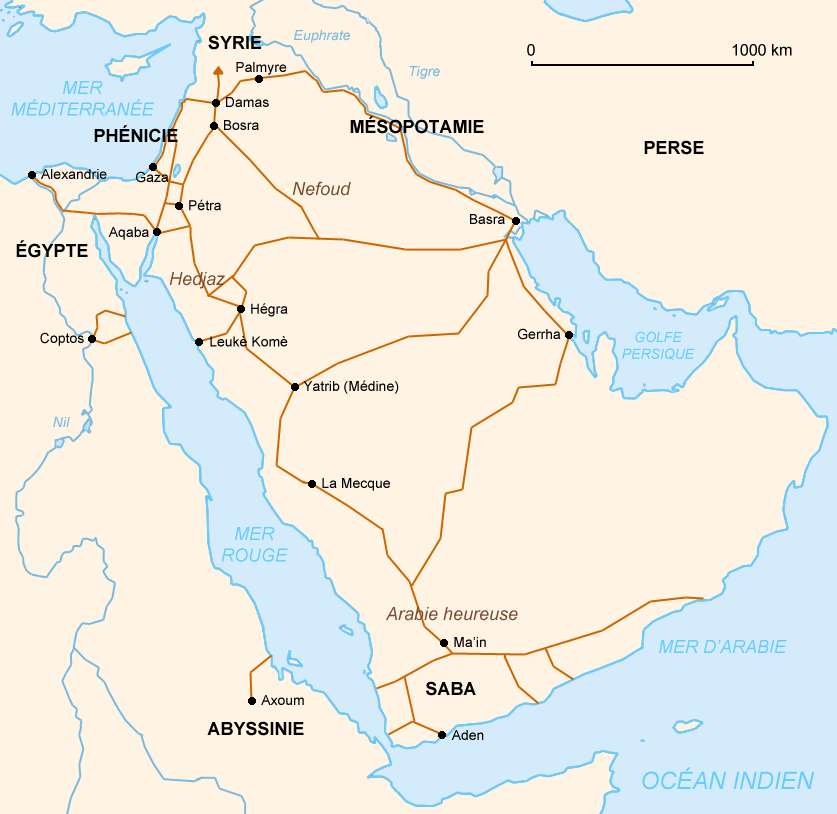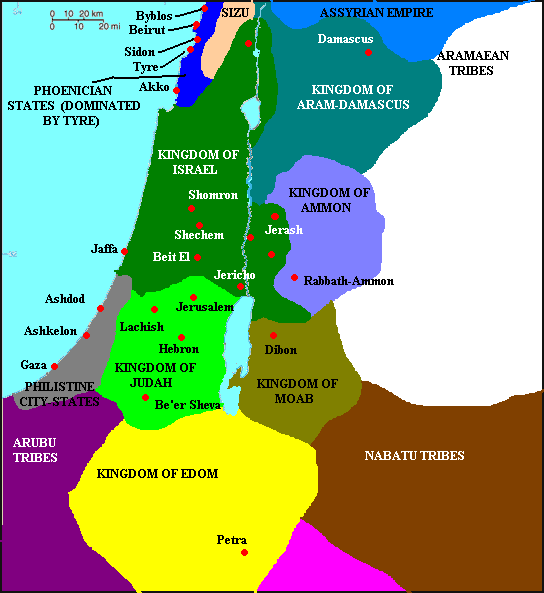My plan was initially to visit on my own but it turned out it was simpler to book an organized tour for my first visit. The tour, with an Israeli company called Desert Eco Tours went thus:
- Sunday evening: entered Jordan at Aqaba crossing, were taken to a camping site in the Wadi Rum region for the night.
- Monday: Jeep tour in the Wadi Rum nature reserve. Dunes, mountains, inscriptions on the rocks.
- Tuesday: guided tour of Petra. Nabatean necropolis, Roman cardo and temples, Byzantine church.
- Wednesday: from Petra down to the Arava valley and back to the Aqaba crossing.
History. Trying to grasp the ancient routes (King's Highway, Incense Route), remember the map and chronology of local peoples (Nabateans, Edomites, Moabites, Ammonites, Israelites, ...) and the history of the conquests (Assyrians, Babylonians, Persians, Greeks, Romans, Arabs, Crusaders, ...) is not a piece of cake!
I find it particularly challenging to understand the early Biblical period because the narrative of the Bible is often given as the starting hypotheses with historical speculations and observations coming next. For example, the Wikipedia article on Edom starts:
Edom (Hebrew: אֱדוֹם, Standard Edom Tiberian ʾĔḏôm ; "red") is a name given to Esau in the Hebrew Bible, as well as to the nation descending from him. The nation's name in Assyrian was Udumi; in Syriac, ܐܕܘܡ; in Greek, Ἰδουμαία (Idoumaía); in Latin, Idumæa or Idumea.I find it very confusing to start defining something real by the Biblical myth usually associated with it! The next paragraph explains:
The Edomite people were a Semitic-speaking tribal group inhabiting the Negev Desert and the Arabah valley of what is now southern Israel and adjacent Jordan. The region has much reddish sandstone, which may have given rise to the name "Edom". The nation of Edom is known to have existed back to the 8th or 9th century BCE, and the Bible dates it back several centuries further. Recent archeological evidence may indicate an Edomite nation as long ago as the 11th century BCE, but the topic is controversial. The nation ceased to exist with the Jewish-Roman Wars.This explanation is better, stating facts and then referring to the Bible for comparison, but if you pay attention, in a single sentence you go from something which "is known" (meaning proven by inscriptions?) to "the Bible" and back to "archeological evidence", so one has to keep in mind three different versions of the same fact.
It turns out, if I understand well, that the travel of the Israelites from Mount Sinai to Mount Nebo according to the Pentateuch makes historical sense, which is a surprise to me...
In red on this map the King's Highway:

The main Nabatean roads... I don't know how much the map can be trusted but we were told over and over about the Incense Route which should run from the South of the Arabian Peninsula to Gaza through Wadi Rum and Petra.

Map of the Levant, c. 830 BCE.

I'll write more about what I thought about Jordan soon, let me publish this already.
No comments:
Post a Comment